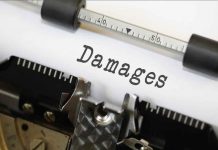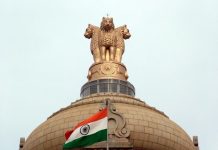This article is written by Sahaja, from NALSAR University of Law, Hyderabad. This article covers the principles of strict and absolute liability in India and its evolution through the years.
Table of Contents
Background
A single-judge bench of the Madras HC, in a recent case, ordered the Tamil Nadu government to pay interim compensation to the parents of a newborn whose thumb was severed off by a nurse in a government hospital in Thanjavur.
A hospital staff nurse accidentally severed a part of the 14-day-old child’s left thumb while removing the pediatric venflon (cannula) that had been wrapped in surgical tape. The amputated thumb was stitched up right away by the doctors. In addition, a group of doctors kept the child under observation. The plastic surgeon, who was supported by a paediatric surgeon, did another operation.
The parents of the child submitted a request for compensation and their counsel submitted that despite the surgery, the child’s thumb was not fully fixed, resulting in a permanent handicap. They also claimed compensation for the trauma that was a consequence of seeing the severed finger.
In this circumstance, the Madras HC reiterated the doctrine of strict liability theory and ordered interim compensation by the Government hospital as there was clear negligence on the part of the nurse.
History of the doctrines of strict and absolute liability in India
With a few exceptions, the rule of absolute liability is identical to the rule of strict liability. This rule of absolute liability applies without limitation or exemption, making a person fully accountable for any mistake. The capacity to hold anyone completely responsible for their actions and the application of severe penalties constitute these liabilities’ ultimate liability.
In the case of Rylands v. Fletcher, 1868, the Court established the principle of strict liability which was seen as a solid and concrete concept needing no further analysis in India. Strict liability is a rule that holds anyone who owns a hazardous or dangerous thing on their property responsible for any damage caused by the object’s escape, regardless of the individual’s intent to create such damage or harm.
Following the Bhopal Gas Tragedy, 1989 and the oleum gas leak, the Indian judiciary determined that it was necessary to develop a paradigm to deal with such unusual situations, in which the defendant should bear full responsibility for the activity that resulted in such large-scale losses.
Defences against strict liability and absolute liability
Strict liability refers to a party’s liability that is imposed without a finding of fault. The plaintiff merely needs to show that the tort took place and that the defendant was to blame. Situations that are considered inherently harmful are subject to strict liability under the law. It deters irresponsible behaviour and unnecessary legislation by requiring potential defendants to take all reasonable precautions.
For the application of strict liability, one must possess a dangerous substance and this dangerous substance must escape from the premises of the owner.
The exceptions to strict liability are:
- Plaintiff’s fault- If the escape of the dangerous substance is due to the fault of the plaintiff, the defense can be pleaded.
- Act of God- If the event was unprecedented and was beyond the control of a human
- Act of the third party- If the event occurred due to the act of a third party which was unforeseen in natural circumstances.
- Consent of the plaintiff- If the act was done at the wish of the plaintiff.
Strict liability minus exceptions is the definition of absolute liability. If any person is engaged in any activity and any injury is caused to another person as a result of that conduct, the person engaged in that activity will be held absolutely liable. The strict liability exception would not be considered.
This is what distinguishes absolute liability from strict liability. A person who is accountable under strict liability can claim the exceptions set forth in strict liability, whereas absolute liability has no exceptions.
Why is absolute liability more prevalent in Indian practice than strict liability
The rule established in the case of Rylands v. Fletcher is that:
- The defendant must have brought something dangerous or something that might cause danger onto his or her land.
- There must be a non-natural use of this land that leads to the accident.
- The substance brought to the land must be such that when it escapes it causes mischief.
- There needs to be an escape of the substance
- The escape must cause mischief and this must be foreseeable as the natural cause of the escape of such a substance.
Since this above rule was stated, a number of defences have been developed against the rules of strict liability. Some of these defences are discussed in the previous section of this article.
As this rule of strict liability took many defences into account not many people could be held strictly liable for the consequences of their actions that caused harm. As a result, it was necessary to create a more stringent law with the same goal.
The Apex Court of India in the M.C. Mehta case examined the need to modify the 19th-century rule of strict liability, concluding that the principle established in Ryland v. Fletcher of strict liability cannot be applied in the modern world because the principle was developed in the 19th century, and this principle of tortuous liability cannot be taken into account without any modifications.
Industrialization
India’s economy is still in its early stages of development. The strict responsibility rule has been around for a long time. The old rule was developed when there was very little industrial progress, hence it is inapplicable in a rapidly rising country like India. Due to the fast process of industrialization and the constant use of inherently dangerous substances in industries and factories, it is necessary to establish a rule of law that makes people accountable for any foreseen dangers that their actions could possibly cause.
Use of land for agriculture
In India, the land is primarily utilised for farming. As a result, it is ideal to store water in a large tank for irrigation purposes. A similar situation does not exist in the country from which it was chosen. As a result, it does not make sense from an Indian standpoint. It is also important to make sure that this water is stored efficiently and carefully such that it does not cause any harm.
Archaic rule
The old regulation was established in the nineteenth century, almost 150 years ago, when the social and economic situation was drastically different. It is also important to note the growth of science and expertise in the present situation which calls for more safety and precautionary measures that need to be taken. As a result, it was required to create a rule that met the current requirements.
Due to the reasons stated above, legal professionals prefer to use the principle of absolute liability even in cases where an act that has caused harm is due to the natural use of land or even if the substance is not a dangerous one. For example in the recent case(Lg Polymers India Private Limited vs Andhra Pradesh Pollution Control) of the gas leak in Visakhapatnam. This happened due to a gas leak from a plant of LG Polymers which led to severe consequences. The Court in this case had applied the principle of strict liability which was criticised since the rule of absolute liability had to be applied in such cases as the land being used was not for a non-natural cause and the gas that leaked was indeed harmful substance.
Difference between absolute and strict liability
The Supreme Court defined the difference between strict and absolute liability standards in M.C. Mehta v. Union of India, as follows:
Only those firms engaged in hazardous or intrinsically dangerous operations will be held liable under absolute liability, implying that other industries not falling within the aforesaid purview will be subject to the strict liability regulation.
It is not essential for a harmful thing to escape one’s own land; it simply implies that the law of absolute liability applies to those hurt both within and outside the premises.
The Ryland V Fletcher rule applies solely to non-natural uses of land, whereas the new rule of absolute liability applies to all uses of land. Though a person uses a dangerous material that is a natural use of land and the substance escapes, he will be held accountable even if he took all reasonable precautions.
There are no exceptions to the norm of absolute liability, although there are several exceptions to the rule of strict liability.
Medical negligence in India and related law
Negligence is defined as the failure to take necessary precautions. Negligence is no exception. It’s only that in cases of medical negligence, the defendant is the doctor. Negligence is punished both as a criminal offense and as a tort.
A doctor has specific responsibilities of care to his patients, and if the doctor fails to discharge such obligations, it is considered a breach of duty, and the patient has the right to sue. A doctor commits a breach of duty when he fails to provide the level of care that a reasonable doctor would. In most cases, the complainant has the burden of proving carelessness. Any charge of negligence against a doctor must meet a higher burden of proof under the law. In order to win in cases of medical negligence, the patient must first make a claim against the doctor.
In general, a doctor’s liability arises when a patient is injured as a result of the doctor’s defective behaviour, which fell significantly below the reasonable standard of care.
Section 304A, 337, and 338 of the Indian Penal Code deal with the case of medical negligence as a criminal offence. The claim for damages in civil liability is made in the form of compensation. If there is a breach of duty of care while operating or while under the supervision of the hospital or a doctor. They are held vicariously accountable for any wrongdoing and must pay damages in the form of compensation.
Suresh Gupta v. NCT Delhi, 2004– A recently married 31-year-old had a small problem in his nose and a small incision had to be made. The doctor made the incision in the wrong place, which gave rise to his death. Held that the standard of negligence to be proved against doctors in such cases needs to be so high as to show apathy towards the patient, in which cases the person may be held to be liable. When the death of the patient is a result of an error of judgment or an accident, it would not be a case where he would be criminally liable. For this act of negligence, the doctor may be liable in tort but his carelessness or want of due attention and skill cannot be described to be so reckless or grossly negligent as to make him criminally liable.
Jacob Mathew v State of Punjab, 2005– In this case, an aged patient in an advanced stage of terminal cancer was experiencing breathing difficulties, and the oxygen cylinder connected to the mouth of the patient was found to be empty. By the time replacement could be made, the patient had died. The Supreme Court not only approved the principle laid down in the previously mentioned case which is Dr. Gupta case but also opined that ‘negligence in the context of the medical profession necessarily calls for a treatment with a difference…a case of occupational negligence is different from one of professional negligence.’ Delving into the liability of a doctor for his rash or negligent act leading to the death of his patient, it ruled that:
A professional may be held liable for negligence on one of the two findings: either he was not possessed of the requisite skill which he professed to have possessed, or, he did not exercise, with reasonable competence in the given case, the skill which he did possess. The standard to be applied for judging, whether the person charged has been negligent or not, would be that of an ordinary competent person exercising ordinary skill in that profession.
Conclusion
As mentioned in the previous sections, absolute liability is a comparatively new and modern rule of law that is applicable to hold the defendant strictly liable for his or her actions that cause harm in society. This principle and rule of law has evolved from the previous law of strict liability which does have exceptions and defences that can be exercised by the defendant.
Legal professionals rely on the rule of absolute liability when dealing with cases that concern firms engaged in hazardous or intrinsically dangerous operations since in such cases the consequences and harmful effects of such actions are foreseeable by a reasonable man and undue care and precautions need to be kept in mind while dealing in such operations. For other industries and acts, the doctrine of strict liability can be applied. For example, in cases of medical negligence.
References
- http://www.legalserviceindia.com/legal/article-4532-liability-strict-liability-absolute-liability-and-vicarious-liability-under-law-of-tort.html
- https://www.latestlaws.com/articles/all-about-law-on-medical-negligence-in-india-by-gargi/
LawSikho has created a telegram group for exchanging legal knowledge, referrals, and various opportunities. You can click on this link and join:












